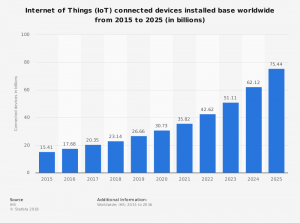How IoT Is Transforming Data Centers: Within, Across & Outside In
Published on February 28, 2020,
by
This article was previously posted on Cloudtweaks
IoT is Transforming How We Use Data Centers
An often repeated saying by many data center professionals is “We’ve always done IoT, we’re just terrible at marketing.”
They’re right, of course (at least regarding IoT!), and IoT proper is now firmly finding its role in three key areas regarding data centers: Within, Across, and Outside In. Let’s consider each of these in turn.
Within: Improving Data Center Infrastructure
A data center is a particularly hostile environment: Tens of thousands of pieces of equipment, from numerous manufacturers, which refuse to work together well, if at all. Inconsistent equipment behavior (the same model UPS from the same provider manufactured at different times can behave differently!) and differing protocols, data semantics (is that value Watts or Kilowatts?) and security mechanisms result in an environment which quickly spirals in complexity, defying holistic management.
Providers (and even many end-users) have responded by creating an abstraction layer atop the hardware to normalize the differences outlined above, allowing equipment to share information and state with higher-level monitoring and control systems in a somewhat standard way.
Sound a lot like IoT? Of course, albeit with a large, recognized downside: It is difficult to scale this approach, as each piece of equipment usually requires significant investment to define and test the appropriate adapter; these adapters are brittle, as they often are created empirically and rely on data streams and behavior often specific to a model, type or even serial number. Further, it is not uncommon for new firmware versions to change the behavior of the unit.
The great promise of IoT within the data center, then, addresses the complexity and silos within data centers by providing “drop and play” functionality for equipment and critical infrastructure, with:
- Standard interfaces and adapters, ideally provided and maintained by the manufacturer,
- Well defined and expected behavior, and
- Extensibility and flexibility for management and control.
The underlying benefit, of course, is increased standardization and interoperability across the many different systems and providers in the data center, resulting in streamlined deployment, greater choice, and new functionality.
Across: Remote Monitoring & Control
Traditional data centers focused on the systems within the confines of the building proper. With the emergence of edge data centers and various cloud and colocation options, a much larger and richer topology needs to be considered. Edge data centers should not be standalone; they must be incorporated into the larger computing fabric. Colocation facilities must not be black boxes; they hold valuable equipment and computing power which needs to be optimally used. Further, federation and aggregation of data center monitoring, control and reporting must span all facilities, from the core to colo to edge.
Monitoring and control of remote facilities, where the luxury of “walking the aisles” doesn’t exist, is especially important given their outsized growth. Achieving any of these goals requires effective communication across the many, differing nodes, and critically, must encompass a very rich set of equipment within those nodes, down to the component level. Why shouldn’t we know we have across all of our computing fabric? How much thermal capacity exists, and what’s its status and efficiency at any given time?
IoT provides an ideal mechanism for linking together the many different nodes and devices within a rich data center topology. It is lightweight and open, can easily accommodate any type of device or data, has a wealth of tools and platforms, and the industry has started to provide purpose-built equipment such as IoT gateways for aggregating and transmitting IoT packets quickly and securely.
Today’s rich data center topologies must be cohesively linked and managed, providing an ideal use case for IoT.
Outside In: Communication & Connectivity
The most intriguing use of IoT regarding data centers involves “Outside In” data. Consider autonomous vehicles: They both generate and consume a tremendous amount of temporal and spatial data; sensors need to be placed at well-defined and known locations; and numerous other systems, such as emergency response, need to be incorporated. This resulting “intelligent grid” ultimately will be managed by data centers, likely via geographically dispersed edge facilities cooperating with core data centers. The ideal communication mechanism for this grid, anchored by computing facilities? IoT.
There are numerous other examples of very high scale, wide-area, lightweight devices driving traffic into data centers for optimal outcomes. Think of Smart Homes: When the numerous smart devices in our homes need to communicate up to our utility to allow them to manage electrical supply better (hopefully with a discount for opting in!), what better mechanism than IoT?
Finally, consider the following data from IHS:

Those 23 billion devices today are, by definition, communicating. As these devices evolve from novelty to utility, from the light switch to industrial control, they will flow an ever-growing amount of increasingly critical information up to data centers for processing. This will further drive growth in data centers and their rich topology, reinforcing the role of IoT and data centers: Within, Across and Outside In. This time we’ll get the marketing right.
